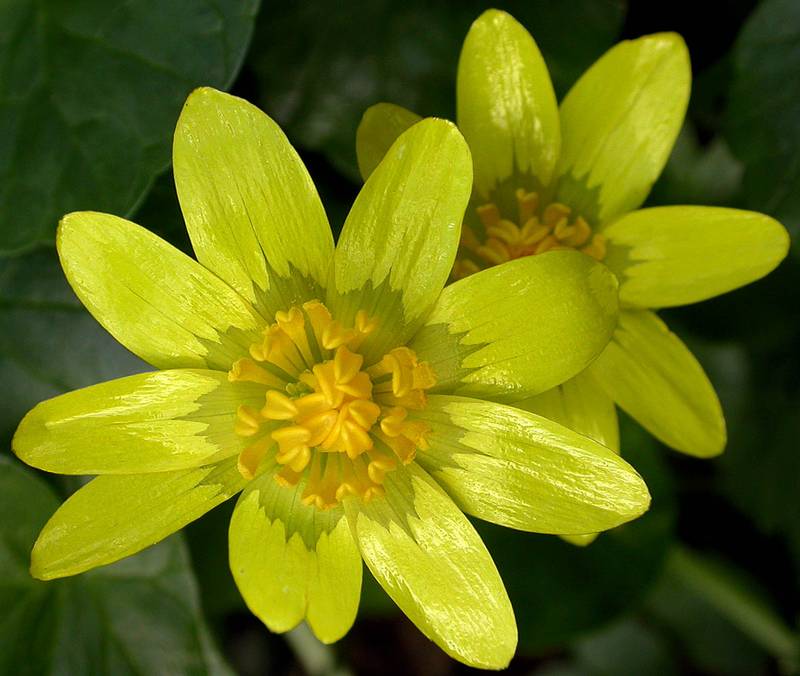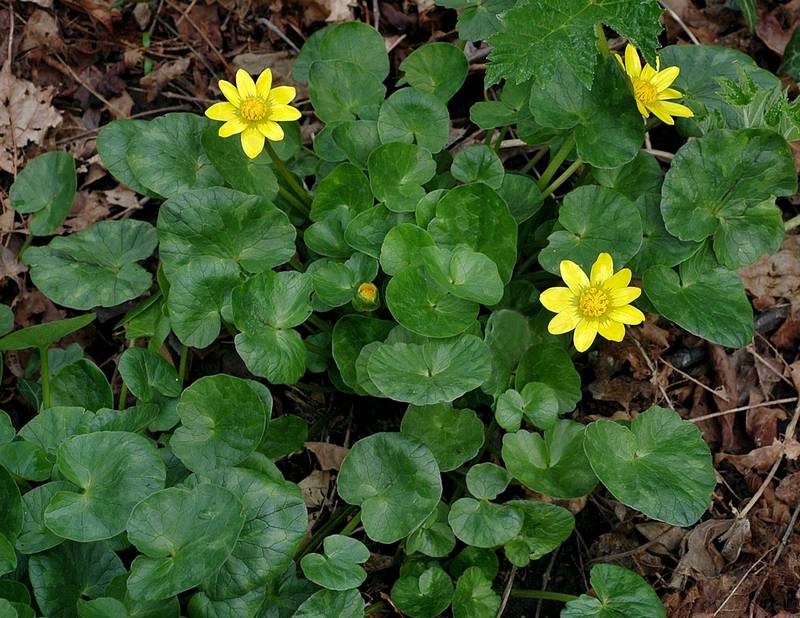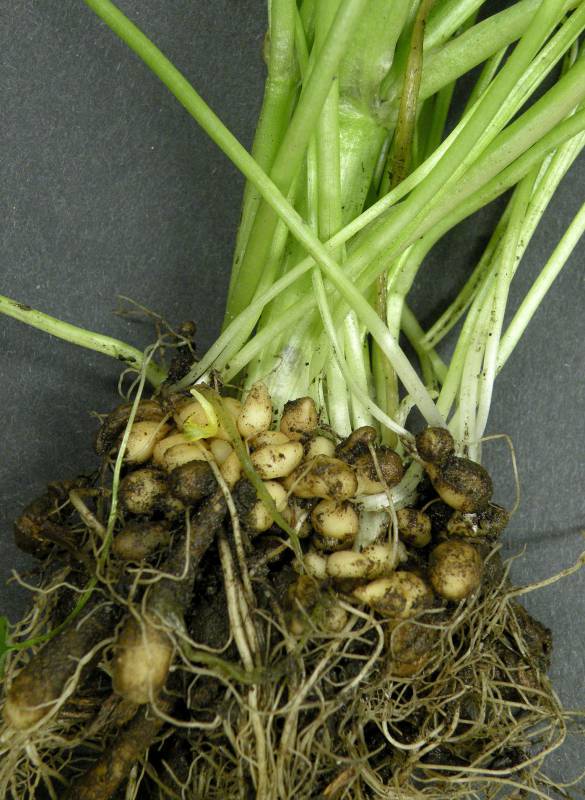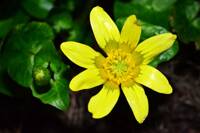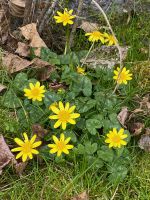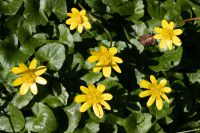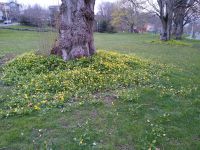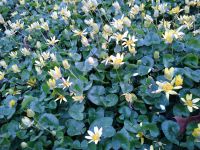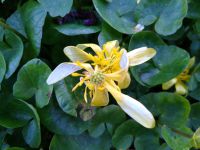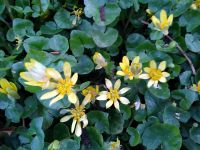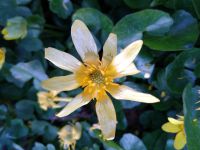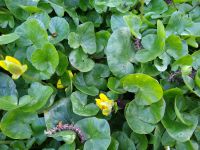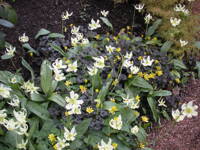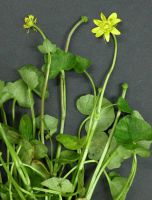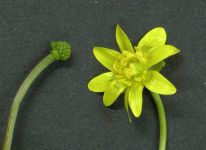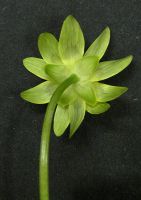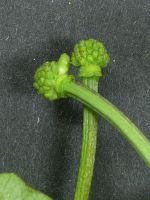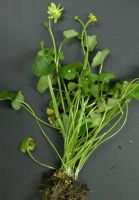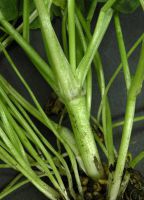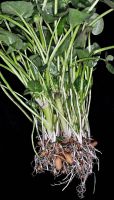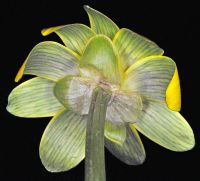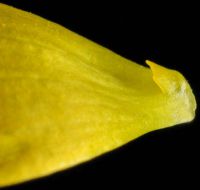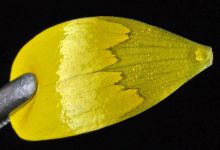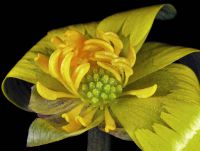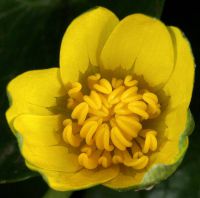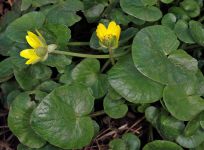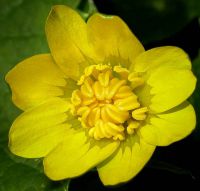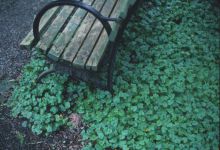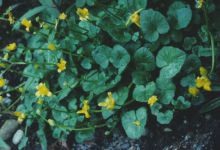Distribution: Occurring west of the Cascades crest in Washington; British Columbia to Oregon, also in eastern North America.
Habitat: Disturbed areas generally at low elevations, often where seasonally moist in the spring.
Flowers: April-May
Origin: Introduced from Europe
Growth Duration: Perennial
Conservation Status: Not of concern
Glabrous, herbaceous perennials from tuberous roots, the stems decumbent or erect, not rooting nodally; bulbils sometimes formed in leaf axils.
Leaves alternate, the basal simple and undivided, the blades cordate, deltate or semi-circular, 1.8-3.7 cm. long and 2-4 cm. wide, glabrous, the margins entire or wavy, the tips obtuse.
Flowers solitary on long peduncles; sepals green, spreading, saccate at the base, 4-9 mm. long and 3-6 mm. wide, glabrous; petals yellow, 10-15 mm. long and 3-7 mm. wide; heads of achenes hemispheric, 4-5 mm. tall and 6-8 mm. wide; stamens numerous.
Achenes about 2.7 mm. long, pubescent, without a beak.
Publication: Fl. Angl. (Hudson) 214. 1762.
Ranunculus ficaria L. ssp. bulbifera (Marsden-Jones) Lawalrée
Ranunculus ficaria L. ssp. calthifolius (Rchb.) Arcang.
Ranunculus ficaria L. var. bulbifera Albert [KZ99]
PNW Herbaria: Specimen records of Ficaria verna in the Consortium of Pacific Northwest Herbaria database
WA Flora Checklist: Ficaria verna checklist entry
OregonFlora: Ficaria verna information
E-Flora BC: Ficaria verna atlas page
CalPhotos: Ficaria verna photos

